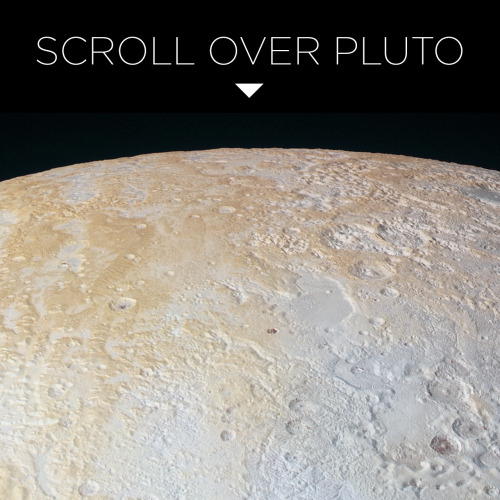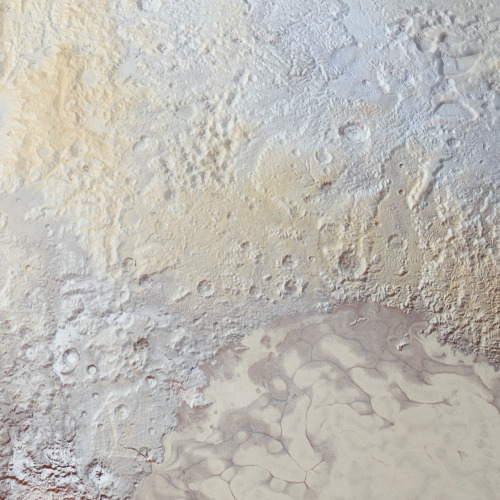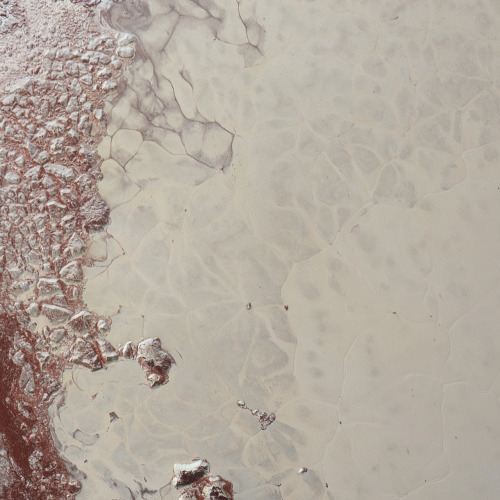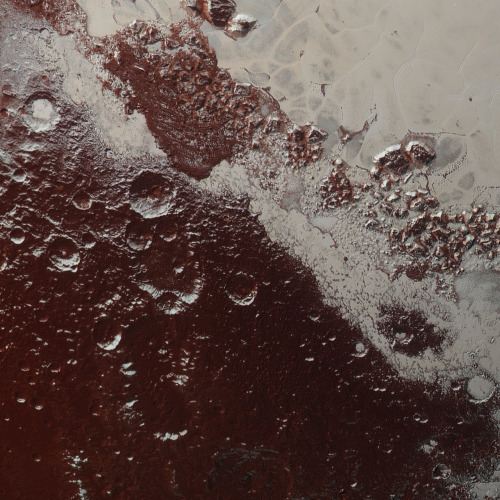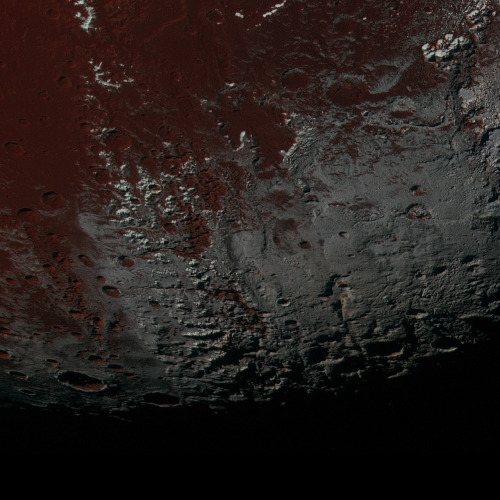Solar System By Jian Guo










Solar System by Jian Guo
More Posts from Fillthevoid-with-space and Others
10 Things: Mysterious 'Oumuamua
The interstellar object ‘Oumuamua perplexed scientists in October 2017 as it whipped past Earth at an unusually high speed. This mysterious visitor is the first object ever seen in our solar system that is known to have originated elsewhere. Here are five things we know and five things we don’t know about the first confirmed interstellar object to pass through our solar system.
1. We know it’s not from around here.
The object known as 1I/2017 U1 (and nicknamed ‘Oumuamua) was traveling too fast (196,000 mph, that’s 54 miles per second or 87.3 kilometers per second) to have originated in our solar system. Comets and asteroids from within our solar system move at a slower speed, typically an average of 12 miles per second (19 kilometers per second) . In non-technical terms, 'Oumuamua is an “interstellar vagabond.”

Artist impression of the interstellar object ‘Oumuamua. Credit: ESA/Hubble, NASA, ESO, M. Kornmesser
2. We’re not sure where it came from.
'Oumuamua entered our solar system from the rough direction of the constellation Lyra, but it’s impossible to tell where it originally came from. Thousands of years ago, when 'Oumuamua started to wander from its parent planetary system, the stars were in a different position so it’s impossible to pinpoint its point of origin. It could have been wandering the galaxy for billions of years.

3. We know it’s out of here.
'Oumuamua is headed back out of our solar system and won’t be coming back. It’s rapidly headed in the direction of the constellation Pegasus and will cross the orbit of Neptune in about four years and cover one light year’s distance in about 11,000 years.
4. We don’t really know what it looks like.
We’ve only seen it as a speck of light through a telescope (it is far away and less than half a mile in length), but its unique rotation leads us to believe that it’s elongated like a cigar, about 10 times longer than it is wide. We can’t see it anymore. Artist’s concepts are the best guesses at what it might look like.
5. We know it got a little speed boost.
A rapid response observing campaign allowed us to watch as 'Oumuamua got an unexpected boost in speed. The acceleration slightly changed its course from earlier predictions.
“This additional subtle force on ′Oumuamua likely is caused by jets of gaseous material expelled from its surface,” said Davide Farnocchia of the Center for Near Earth Object Studies (CNEOS) at NASA’s Jet Propulsion Laboratory. “This same kind of outgassing affects the motion of many comets in our solar system.”
6. We know it’s tumbling.
Unusual variations in the comet’s brightness suggest it is rotating on more than one axis.

This illustration shows ‘Oumuamua racing toward the outskirts of our solar system. As the complex rotation of the object makes it difficult to determine the exact shape, there are many models of what it could look like. Credits: NASA/ESA/STScI
7. We don’t know what it’s made of.
Comets in our solar system kick off lots of dust and gas when they get close to the Sun, but 'Oumuamua did not, which led observers to consider defining it as an asteroid.
Karen Meech, an astronomer at the University of Hawaii’s Institute of Astronomy, said small dust grains, present on the surface of most comets, may have eroded away during ′Oumuamua’s long journey through interstellar space. “The more we study ′Oumuamua, the more exciting it gets.” she said. It could be giving off gases that are harder to see than dust, but it’s impossible to know at this point.
8. We knew to expect it.
Just not when. The discovery of an interstellar object has been anticipated for decades. The space between the stars probably has billions and billions of asteroids and comets roaming around independently. Scientists understood that inevitably, some of these small bodies would enter our own solar system. This interstellar visit by ‘Oumuamua reinforces our models of how planetary systems form.

9. We don’t know what it’s doing now.
After January 2018, ’Oumuamua was no longer visible to telescopes, even in space. But scientists continue to analyze the data gathered during the international observing campaign and crack open more mysteries about this unique interstellar visitor.
10. We know there’s a good chance we’ll see another one…eventually.
Because ′Oumuamua is the first interstellar object ever observed in our solar system, researchers caution that it’s difficult to draw general conclusions about this newly-discovered class of celestial bodies. Observations point to the possibility that other star systems regularly eject small comet-like objects and there should be more of them drifting among the stars. Future ground- and space-based surveys could detect more of these interstellar vagabonds, providing a larger sample for scientists to analyze. Adds, Karen Meech, an astronomer at the University of Hawaii’s Institute of Astronomy: “I can hardly wait for the next interstellar object!“
Make sure to follow us on Tumblr for your regular dose of space: http://nasa.tumblr.com.
Ongoing Space Science Seeks to Keep Astronauts Healthy
ISS - Expedition 50 Mission patch. March 10, 2017 NASA is preparing for longer human journeys deeper into space and is exploring how to keep astronauts healthy and productive. The Expedition 50 crew members today studied space nutrition, measured their bodies and checked their eyes to learn how to adapt to living in space. The space residents also unloaded a cargo ship, worked on the Tranquility module and practiced an emergency simulation. The ongoing Energy experiment that ESA astronaut Thomas Pesquet collected urine samples for today seeks to define the energy requirements necessary to keep an astronaut successful during a space mission. Pesquet also joined NASA astronaut Peggy Whitson for body measurements to learn how microgravity affects body shape and impacts crew suit sizing. Commander Shane Kimbrough checked his eyes today with Whitson’s help and support from experts on the ground.
Image above: Astronaut Shane Kimbrough and Thomas Pesquet were pictured inside the cupola just after the SpaceX Dragon was captured Feb. 23, 2017. Image Credit: NASA. Kimbrough worked throughout the day before his eye checks and configured the Tranquility module for upcoming electronics and communications work. Cosmonaut Oleg Novitskiy continued unloading gear from the newly-arrived Progress 66 cargo ship. At the end of the day, Novitskiy joined Whitson and Pesquet for an emergency simulation with inputs from control centers in Houston and Moscow. Related links: Energy experiment: https://www.nasa.gov/mission_pages/station/research/experiments/397.html Body measurements: https://www.nasa.gov/mission_pages/station/research/experiments/1070.html Space Station Research and Technology: https://www.nasa.gov/mission_pages/station/research/index.html International Space Station (ISS): https://www.nasa.gov/mission_pages/station/main/index.html Image (mentioned), Text, Credits: NASA/Mark Garcia. Best regards, Orbiter.ch Full article
Deep Space Gateway to Open Opportunities for Distant Destinations
NASA logo. March 29, 2017 NASA is leading the next steps into deep space near the moon, where astronauts will build and begin testing the systems needed for challenging missions to deep space destinations including Mars. The area of space near the moon offers a true deep space environment to gain experience for human missions that push farther into the solar system, access the lunar surface for robotic missions but with the ability to return to Earth if needed in days rather than weeks or months. The period of exploration in the vicinity of the moon will begin with the first integrated mission of the Space Launch System (SLS) rocket and the Orion spacecraft, and will continue as we explore further. NASA aims to begin a cadence of one flight per year after the second mission, and the agency has established an initial set of integrated human exploration objectives combining the efforts aboard the International Space Station, SLS and Orion, and other capabilities needed to support human missions to explore deep space. Flight hardware for SLS and Orion is currently in production for the first and second missions, life support and related technologies are being tested on ISS, and habitation and propulsion development activities are also underway. NASA is working with domestic and international partners to solve the great challenges of deep space exploration. Missions in the vicinity of the moon will span multiple phases as part of NASA’s framework to build a flexible, reusable and sustainable infrastructure that will last multiple decades and support missions of increasing complexity. Deep Space Gateway This first phase of exploration near the moon will use current technologies and allow us to gain experience with extended operations farther from Earth than previously completed. These missions enable NASA to develop new techniques and apply innovative approaches to solving problems in preparation for longer-duration missions far from Earth. In addition to demonstrating the safe operation of the integrated SLS rocket and Orion spacecraft, the agency is also looking to build a crew tended spaceport in lunar orbit within the first few missions that would serve as a gateway to deep space and the lunar surface. This deep space gateway would have a power bus, a small habitat to extend crew time, docking capability, an airlock, and serviced by logistics modules to enable research. The propulsion system on the gateway mainly uses high power electric propulsion for station keeping and the ability to transfer among a family of orbits in the lunar vicinity. The three primary elements of the gateway, the power and propulsion bus and habitat module, and a small logistics module(s), would take advantage of the cargo capacity of SLS and crewed deep space capability of Orion. An airlock can further augment the capabilities of the gateway and can fly on a subsequent exploration mission, Building the deep space gateway will allow engineers to develop new skills and test new technologies that have evolved since the assembly of the International Space Station. The gateway will be developed, serviced, and utilized in collaboration with commercial and international partners.
Lunar Space Station
“I envision different partners, both international and commercial, contributing to the gateway and using it in a variety of ways with a system that can move to different orbits to enable a variety of missions,” said William Gerstenmaier, associate administrator for Human Exploration and Operations at NASA Headquarters in Washington. “The gateway could move to support robotic or partner missions to the surface of the moon, or to a high lunar orbit to support missions departing from the gateway to other destinations in the solar system.” Deep Space Transport The second phase of missions will confirm that the agency’s capabilities built for humans can perform long duration missions beyond the moon. For those destinations farther into the solar system, including Mars, NASA envisions a deep space transport spacecraft. This spacecraft would be a reusable vehicle that uses electric and chemical propulsion and would be specifically designed for crewed missions to destinations such as Mars. The transport would take crew out to their destination, return them back to the gateway, where it can be serviced and sent out again. The transport would take full advantage of the large volumes and mass that can be launched by the SLS rocket, as well as advanced exploration technologies being developed now and demonstrated on the ground and aboard the International Space Station. This second phase will culminate at the end of the 2020s with a one year mission in the lunar vicinity to validate the readiness of the system to travel beyond the Earth-moon system to Mars and other destinations, and build confidence that long-duration, distant human missions can be safely conducted with independence from Earth. Through the efforts to build this deep space infrastructure, this phase will enable explorers to identify and pioneer innovative solutions to technical and human challenges discovered or engineered in deep space. To achieve the agency’s goal to extend humanity’s presence in the solar system will require the best research, technologies and capabilities from international partners and the private sector. NASA will look to partners for potential contributions of spaceflight hardware and the delivery of supplemental resources. The gateway and transport could potentially support mission after mission as a hub of activity in deep space near the moon, representing multiple countries and agencies with partners from both government and private industry. NASA is open to new ideas of both a technical and programmatic nature suggestions as we develop, mature and implement this plan. Related links: Journey to Mars: https://www.nasa.gov/topics/journeytomars/index.html Orion Spacecraft: https://www.nasa.gov/exploration/systems/orion/index.html Space Launch System (SLS): https://www.nasa.gov/exploration/systems/sls/index.html Image, Text, Credits: NASA/Kathryn Hambleton. Greetings, Orbiter.ch Full article
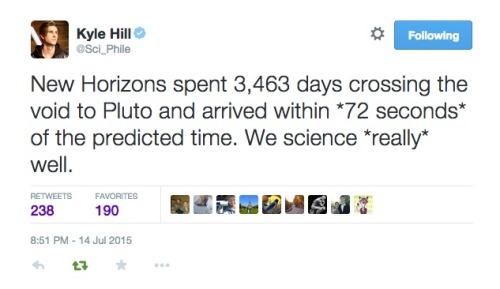
Its pretty incredible how accurate the science of astrophysics has gotten. New Horizons actually arrived 72 seconds early after travelling for almost 10 years straight to its destination.
NASA’s Hybrid Computer Enables Raven’s Autonomous Rendezvous Capability
ISS - International Space Station patch. March 21, 2017 A hybrid computing system developed at NASA’s Goddard Space Flight Center in Greenbelt, Maryland, is the enabling technology behind an ambitious experiment testing a relative navigation and autonomous docking capability known as Raven.
Image above: This panorama of the International Space Station was composed by piecing together images taken by Raven’s Visible Camera. These images were processed by a hybrid computing platform, SpaceCube 2.0. Image Credit: NASA. Developed by the Satellite Servicing Projects Division, or SSPD, the carry-on luggage-sized module was launched February 19 aboard SpaceX’s Dragon spacecraft, along with other experiments deployed outside the International Space Station on an experiment pallet. Raven is testing and maturing visible, infrared and lidar sensors and machine-vision algorithms; the module will bring NASA one step closer to realizing the groundbreaking autopilot capability that can be applied to many NASA missions for decades to come. Since NASA’s pre-Apollo days, the agency has successfully docked spacecraft while they speed through space. However, all operations involved humans who orchestrated the movements from the ground. Raven’s objective is to develop and mature technologies that ultimately will relieve human dependency and give spacecraft the ability to catch up with one another and dock autonomously in real time. “The Raven module is equipped with technology that lays the foundation for a relative navigation system,” said Goddard Director Christopher Scolese. “What some may not fully appreciate is the fact that Raven’s sensors could not do their job if it weren’t for another very effective technology called SpaceCube. The SpaceCube processor is the behind-the-scenes technology that is making this important demonstration possible.” SpaceCube is a reconfigurable, very fast flight computing platform that Goddard technologists first demonstrated during a relative navigation experiment on the Hubble Servicing Mission-4 in 2009. During the Raven experiment, the module’s “sensors serve as the eyes. SpaceCube acts as the brain, analyzing data and telling components what to do,” said Ben Reed, deputy division director of SSPD. The “eyes” and the “brain” together create the autopilot capability. Since its initial development, SpaceCube has evolved into a family of flight computers all distinguished by their computing speed, which is 10 to 100 times faster than the commonly used spaceflight processor — the RAD750. Though the RAD750 is immune to the adverse effects of radiation, it is slow and many generations behind the computing speed of commercial processors. SpaceCube processors achieve their data-crunching prowess because Goddard technologists married radiation-tolerant integrated circuits, which are programmed to execute specific computing jobs simultaneously, with algorithms that detect and fix radiation-induced upsets in collected data. Consequently, these hybrid systems are nearly as reliable as the RAD750, yet orders-of-magnitude faster, capable of executing complex computations once limited to ground-based systems.
Image above: This image shows the Defense Department’s experiment pallet, STP-H5, hanging at the end of Canada’s robotic arm during installation on the outside of the International Space Station. Image Credit: NASA. During its two-year stay on the space station, Raven will sense incoming and outgoing visiting space station spacecraft, feeding the data it “sees” to SpaceCube 2.0, one in the family of SpaceCube products. SpaceCube then runs a set of pose algorithms, or a set of instructions, to gauge the relative distance between Raven and the spacecraft it is tracking. Then, based on these calculations, SpaceCube 2.0 autonomously sends commands that swivel the Raven module on its gimbal or pointing system to keep the sensors trained on the vehicle, while continuing to track it. While all this is transpiring, NASA operators on the ground monitor Raven’s technologies, paying close attention to how they function as a system and making necessary adjustments to increase Raven’s tracking abilities. “Tracking spacecraft with this system is only possible because we have SpaceCube,” said SSPD Avionics Technology Lead and SpaceCube Lead Engineer David Petrick, who has won prestigious awards for his work on the processor. “This type of operation requires fast computing.” Raven’s foundational technologies will be applied to future missions. For example, Restore-L, which also will use SpaceCube 2.0, will rendezvous with, grasp, refuel and relocate Landsat 7 when it launches in 2020. SpaceCube 2.0, however, isn’t the only processor now at work on the space station’s external experiment pallet sponsored by the Department of Defense’s Space Technology Program. SpaceCube 1.0 is being used as the communication interface between the space station’s data services and multiple experiments on the pallet. In addition, a miniaturized version of SpaceCube 2.0 — the SpaceCube Mini — is operating two NASA and U.S. Defense Department experiments. NASA also is testing two other miniature computers, developed with the University of Florida. These models are mostly equipped with commercial parts. For other technology news, go to https://gsfctechnology.gsfc.nasa.gov/newsletter/Current.pdf Related links: Raven: https://sspd.gsfc.nasa.gov/Raven.html SpaceCube: https://spacecube.gsfc.nasa.gov/ Space Station Research and Technology: https://www.nasa.gov/mission_pages/station/research/index.html International Space Station (ISS): https://www.nasa.gov/mission_pages/station/main/index.html Images (mentioned), Text, Credits: NASA Goddard Space Flight Center/Lori Keesey/Lynn Jenner. Greetings, Orbiter.ch Full article

You may recognize the seventh picture in the slideshow--it’s my profile picture here. Happy birthday Hubble, you’re older than I am!

Mission Specialist Mae Jemison, the first African American woman in space, during mission STS-47 .
via reddit

Yes, sure its fun to see a lady spin around like that, but I had one of my friends ask me - “Where do you even use this mate?”
Here’s one application that I know very well off.
Spin Stabilization
If you have ever seen a rocket launch, you might know that sometimes the rockets are given a spin while launching. This is known as spin stabilization.

Basically, the rotational inertia of the rotating body will stabilize the rocket against any disturbances and help maintain its intended heading.
The same principle is used in rifling of firearms as well. **

YoYo DeSpin
Okay, now there is the question how to “De-spin” the rocket:
Well, you do what the lady does: stretch out your arms and you will slow down !

The rocket has weights connected to a cable that stretch out and almost immediately the rocket slows down. This maneuver is known as the YoYo DeSpin. ( Damn good name ! )
All thanks to the conservation of angular momentum !
Have a good one !
* Another method to stabilization : 3-axis stabilization
** Bullets spin stabilization - post
** Source rocket launch video
-
 foxgirlchorix reblogged this · 1 year ago
foxgirlchorix reblogged this · 1 year ago -
 countrynerddancer reblogged this · 2 years ago
countrynerddancer reblogged this · 2 years ago -
 countrynerddancer liked this · 2 years ago
countrynerddancer liked this · 2 years ago -
 solnitsata reblogged this · 2 years ago
solnitsata reblogged this · 2 years ago -
 foxgirlchorix liked this · 3 years ago
foxgirlchorix liked this · 3 years ago -
 jdisko liked this · 4 years ago
jdisko liked this · 4 years ago -
 flesh-n-roses reblogged this · 5 years ago
flesh-n-roses reblogged this · 5 years ago -
 theascendedhaveawoken liked this · 6 years ago
theascendedhaveawoken liked this · 6 years ago -
 luxe-bb reblogged this · 6 years ago
luxe-bb reblogged this · 6 years ago -
 dr-acula-phd reblogged this · 6 years ago
dr-acula-phd reblogged this · 6 years ago -
 awayyatsea reblogged this · 6 years ago
awayyatsea reblogged this · 6 years ago -
 continuous-internal-conflict reblogged this · 6 years ago
continuous-internal-conflict reblogged this · 6 years ago -
 continuous-internal-conflict liked this · 6 years ago
continuous-internal-conflict liked this · 6 years ago -
 icouldbeanocean reblogged this · 6 years ago
icouldbeanocean reblogged this · 6 years ago -
 messypapa liked this · 6 years ago
messypapa liked this · 6 years ago -
 sunsounds liked this · 6 years ago
sunsounds liked this · 6 years ago -
 mouthfulofjoyandteeth reblogged this · 6 years ago
mouthfulofjoyandteeth reblogged this · 6 years ago -
 mouthfulofjoyandteeth liked this · 6 years ago
mouthfulofjoyandteeth liked this · 6 years ago -
 blackburn1695 reblogged this · 6 years ago
blackburn1695 reblogged this · 6 years ago -
 burningcoloursx reblogged this · 6 years ago
burningcoloursx reblogged this · 6 years ago -
 chriisnathanael1 reblogged this · 6 years ago
chriisnathanael1 reblogged this · 6 years ago -
 automatic-studen-blog liked this · 6 years ago
automatic-studen-blog liked this · 6 years ago -
 visions-217-blog liked this · 6 years ago
visions-217-blog liked this · 6 years ago -
 matchalover1111-blog liked this · 6 years ago
matchalover1111-blog liked this · 6 years ago -
 cosmic-kale-blog liked this · 6 years ago
cosmic-kale-blog liked this · 6 years ago -
 kalidleon182016 reblogged this · 6 years ago
kalidleon182016 reblogged this · 6 years ago -
 kalidleon182016 liked this · 6 years ago
kalidleon182016 liked this · 6 years ago -
 all-is-for-all liked this · 6 years ago
all-is-for-all liked this · 6 years ago -
 faecicada liked this · 6 years ago
faecicada liked this · 6 years ago -
 faecicada reblogged this · 6 years ago
faecicada reblogged this · 6 years ago -
 owl-sweaters liked this · 6 years ago
owl-sweaters liked this · 6 years ago -
 aminoamina liked this · 6 years ago
aminoamina liked this · 6 years ago -
 grace-eliizabeth liked this · 6 years ago
grace-eliizabeth liked this · 6 years ago -
 laventelinkukka reblogged this · 6 years ago
laventelinkukka reblogged this · 6 years ago -
 bloominglightheart reblogged this · 6 years ago
bloominglightheart reblogged this · 6 years ago -
 zy--lo liked this · 6 years ago
zy--lo liked this · 6 years ago -
 gracinea reblogged this · 6 years ago
gracinea reblogged this · 6 years ago
A podcast project to fill the space in my heart and my time that used to be filled with academic research. In 2018, that space gets filled with... MORE SPACE! Cheerfully researched, painstakingly edited, informal as hell, definitely worth everyone's time.
243 posts

